Whether you’re short on time or simply want to make the most of your daily stroll, we’ve got some great tips to help you improve your walking workout…
This month (May) is National Walking Month. Over the course of lockdown, many people discovered a newfound love for walking – after all, it was one of the few things we could do! Despite restrictions now being a distant memory, lots of people have continued to find joy and relaxation in their daily walks. For others, walking has become a key part of their fitness regime. Looking to turn your love for walking into a workout? Learn how to perfect your technique and improve your fitness through walking with these top tips…
8 tips to improve your walking workout
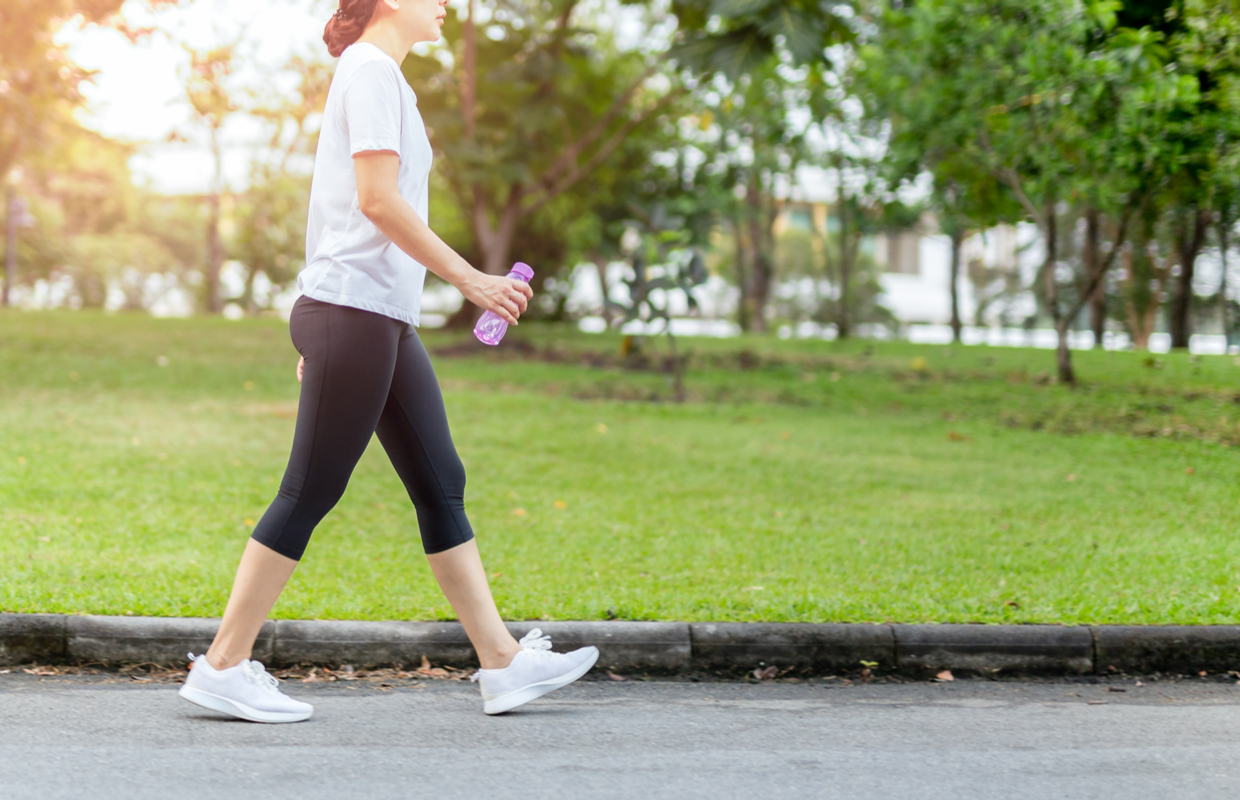
1. Check in with how you are feeling
If you are really pushing yourself, part of your brain should focus on how you are feeling. ‘When I’m walking I remember to ask myself,
“Are my feet landing properly? Are my abs tight, and leading me forward? Or, are my shoulders back and down?” This way I am getting the most out of every step,’ says fitness expert and personal trainer Roger Love.
2. Breathe deeply while you walk
Oxygen is energy when it comes to walking. ‘I like to really fill my lungs with air. I think of it as double breathing – I breathe twice as hard as usual,’ says Roger.
‘If I usually breathe in for three steps, or three seconds, then I’ll breathe out for three. And when I’m breathing out I make sure I empty my lungs which will expel stale toxins from my muscles and lungs,’ he adds. ‘It’s great if you’re starting to tire, as it gives you an extra burst of energy.’
3. Boost your body language
You might think body language is all about communication, but it’s much more than that. ‘To be effective, walking needs to be done with purpose and vigour,’ says Roger. ‘I always say it’s like walking up to a manager to make a complaint! You should walk with your chest up, with focus and dignity, purpose and pride – that’s how confident you should look.
‘Walk like you are really going places, and feel confident about what you are doing. A lot of my female clients say they find they are then able to bring this confidence over into their day-to-day lives – into the office and the home, so that’s another benefit.’
4. Swing your arms while walking
Not everyone recommends you keep your elbows bent at 90 degrees. ‘I think that feels unnatural, unless you’re power walking, 45 degrees is better – this feels more comfortable, yet still allows you to get the benefit of that extra movement,’ says Roger. Give yourself extra momentum by swinging you arms from your pocket to halfway up towards your ear.
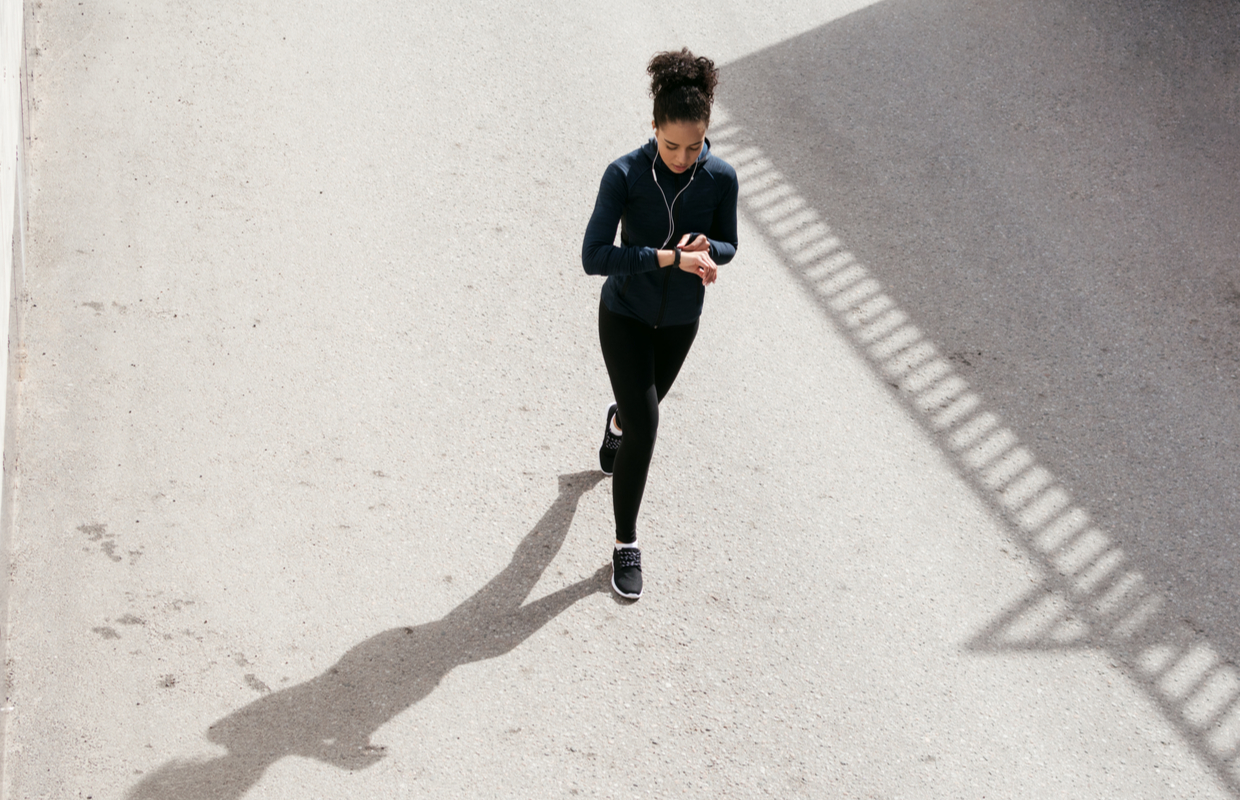
5. Track your progress
The amount of people wearing fitness trackers reached an all-time high recently. They can be a wonderful motivational tool, both in terms of moving more, and increasing the intensity of your walks. Whatever you focus on, it appears the mere act of measuring your activity can
encourage you to do more. A recent study found that people who used trackers to count their steps as part of a walking plan had a more active lifestyle several years later than those without one.
6. Relax your hands while walking
You might not always focus on your hands, but every little helps. Some people clench them and this can spread tension up your arm, into your shoulders and affect your posture. ‘Imagine you are holding something that needs to be held carefully, like a baby chick!’ says Roger.
‘We call it “soft and engaged”. Your fingers are curled, they are active and working, or dynamic, but they are not tense.’
7. Understand your foot type
‘Your body is an amazing, interconnected system. But this means bad footwear can cause aches and pains in your feet, knees, hips, back or even your shoulders,’ says personal trainer Simon Cass. ‘Good walking shoes will provide you with the support you need.’ If you go to a reputable outdoor shop, they should be able to analyse how you walk and help make sure you are wearing the right kind of shoe.
What is my foot type?
Does your foot roll inwards or outwards as you go? A certain amount of roll is normal, but if it’s too much, specialist shoes might help. If you think your foot might have a particularly high or low arch which could affect footwear choice, here is a test you can do at home.
- Wet the sole of your foot.
- Stand on a dark surface, so you can see your footprint.
- Examine which of the images below matches your footprint most closely. If your arches are high or low, it might be worth talking to
footwear experts before you increase your activity.
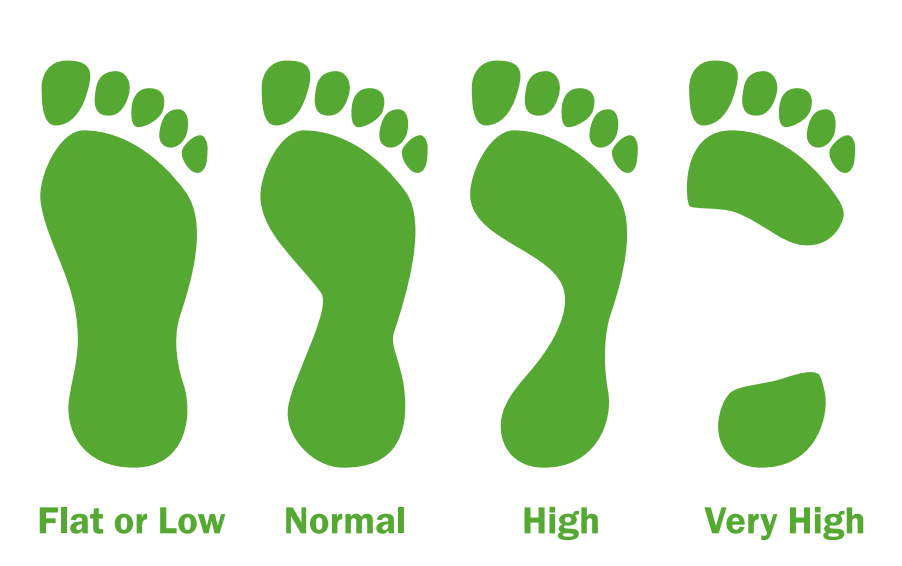
8. Stretch to improve your walking technique
‘Walking is an incredibly positive, inclusive exercise, but there are things you can do when you’re not walking to get even more out of it,’
says walking expert Caroline Sandry.
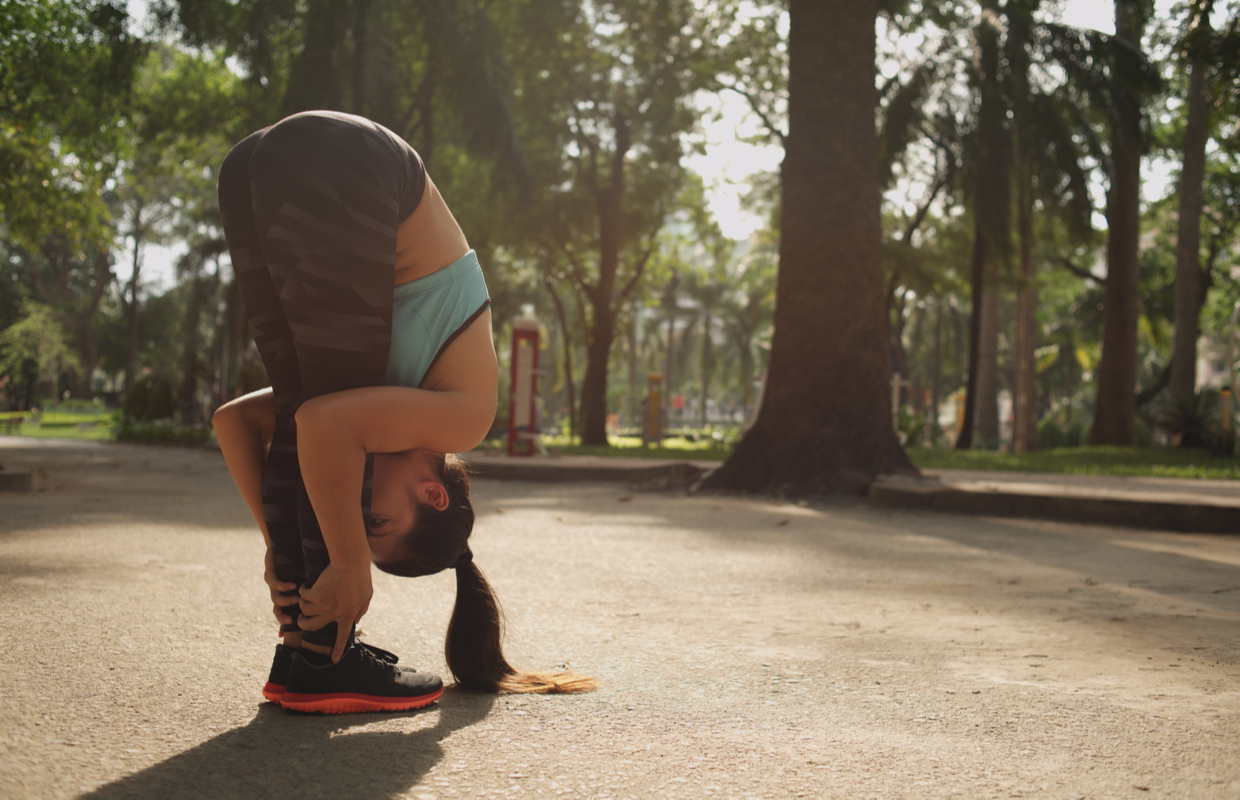
Forward bend
- Stand tall with your feet close together
- Inhale and stretch both arms overhead
- Exhale and fold forward
- Bend your knees to accommodate hamstring length, and place your hands on the floor beside your feet
- Hold, and take deep slow breaths, breathing into the whole of your back
- Stretch your arms out forward and curl back up to stand upright. Repeat, trying to gently straighten your legs in the bend position. Do it 3-4 times.
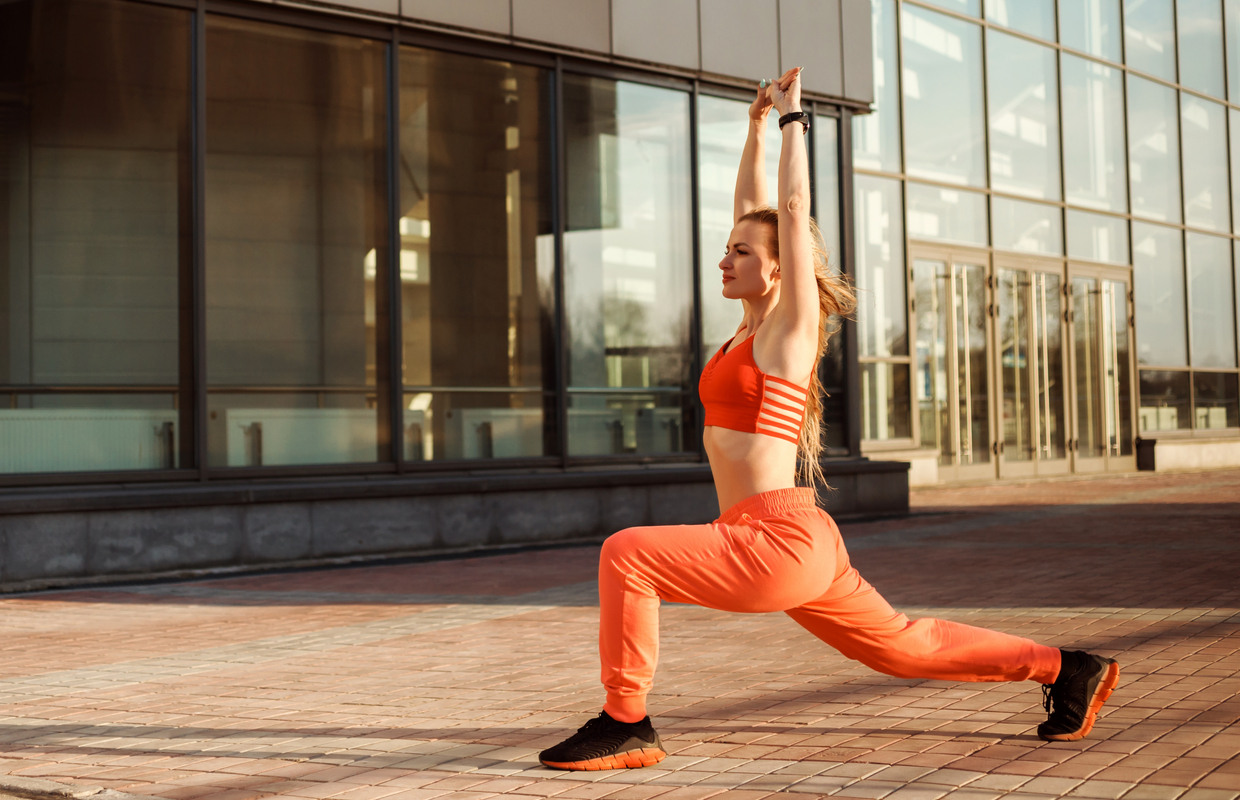
Runner’s lunge
- Stand with your feet hip-width apart
- Take a big step back keeping feet hip-width apart and parallel
- Bend your front knee and gently sink into the stretch, pressing your back heel towards the floor (keep your hips square to the front)
- Stretch your arms overhead and gently sink forward
- Look up and breathe deeply in and out
- Do this 3-4 times each side







